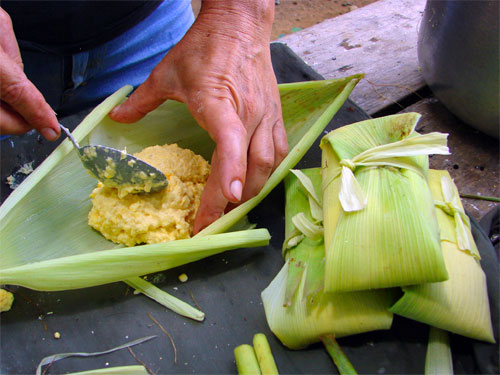Cuban Cuisine: From Riches to Rags
Dariela Aquique

HAVANA TIMES — Cubans have healthy appetites (which is a nice way of saying that we’re big eaters). We like big, varied and heavily-seasoned servings. Our noses have grown used to powerful smells and our palates respond well to the strong flavors of our homegrown seasonings.
Like many other aspects of our culture, Cuban cuisine has Spanish and African influences. In this connection, we also have Chinese, Arabic, Italian and some aboriginal influences. These influences are evident in our habit of eating corn, baking sweet potatoes or preparing cassava cornmeal rolls.
From Spain, we inherited our bean stews, paellas, fritters and ground-meat dishes. From African slaves, many of whom were house servants, we learned different ways of preparing these dishes.
African slaves first introduced us to fried ripe plantains and green plantains fried twice, known in Cuba as chatinos, tostones or “squashed plantains.” They also brought us a dish known as fufu (mashed plantains seasoned with spices and oil). Another typical Afro-Cuban dish is the calalu (an okra stew). Yams and malangas were also brought to Cuba by Africans.
During colonial times, it was customary to feed slaves salted beef and codfish. African slaves would prepare these dishes so well that their masters would also eat them, but not when they had company over, for they did not want to be seen eating slave food in public. Dishes like sweet-potato and beef (and yam and codfish) meatballs, as well as maize flour and beans, date back to these times.
As time went by and people from other places began to arrive in the island, new culinary traditions began to be adopted in Cuba. This is how our traditional cuisine, made up of a little bit from many different places, took shape.
Different communities around the country adopted different ways of preparing these dishes and even gave them different names. An example is the tamale, called tamal in Cuba’s western provinces, and hayaca in the east. Some provinces or towns have become known for their traditional dishes. Some examples are Bayamo and Cardenas, cities known for their stews, Las Tunas, known for its caldosas, Villa Clara, renowned for its stuffed beef steaks, Camaguey, famous for its chopped meat with onions and peppers, and Moron, where people go in search of delicious cookies.
Restaurants were also known for their signature dishes. Recall Rancho Luna’s chicken seasoned with garlic, El Floridita’s tortoise meat, El Faro’s stuffed potatoes, or El Carmelo’s ham sandwiches.
Times have changed, however. The economic crisis that the country has gone through and continues to endure have made many culinary products disappear and forced people to invent new ones. It has also forced people to do without some very basic ingredients, or to use them in smaller-than-ideal proportions, so as to sell part of these in the black market.
The result of this is that many generations of Cubans have been denied the pleasure of many different Cuban dishes.
To be continued…






A few years back I read an article (I think it was the New York Times, not sure) that spoke about one of Queen Elizabeth’s chefs at Buckingham palace who happened to be a Cuban American, and he would prepare the occasional elaborate Cuban meal for the royal family. When shopping for authentic Cuban ingredients he was forced to order his ingredients from Miami as he was unable to find them in Cuba. …the irony!
You know what they say….What are the three worst things about the revolution? Breakfast, lunch and dinner.